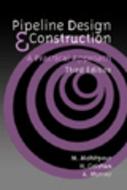Click here to purchase
The rules and instructions presented in this Code apply to fired steam generators. These include coal, oil, and gas fired steam generators as well as steam generators fired by other hydrocarbon fuels. The scope also includes steam generators with integral fuel-sulfur capture utilizing chemical sorbents. Steam generators which are not fired by coal, oil, or gas may be tested using the concepts of this Code, but it should be noted that the uncertainty caused by variability of the fuel may be difficult to determine and is likely to be greater than the uncertainties in sampling and analysis of coal, oil, or gas. Gas turbine heat recovery and other heat recovery steam generators designed to operate with supplemental firing should be tested in accordance with Performance Test Code (PTC) 4.4, Gas Turbine Heat Recovery Steam Generators. This Code does not apply to nuclear steam supply systems, which are specifically addressed in PTC 32.1, Nuclear Steam Supply Systems. This Code does not apply to the performance testing of chemical heat recovery steam generators, municipal waste fired steam generators, pressurized steam generators with gas side pressure greater than 5 atmospheres, or incinerators. Municipal waste fired steam generators can be tested in accordance with PTC 34, Waste Combustors with Energy Recovery. Testing of auxiliary equipment is not addressed in this Code, but shall be governed by the following Performance Test Codes which apply specifically to the equipment in question: PTC 4.2, Coal Pulverizers. PTC 4.3, Air Heaters. PTC 11, Fans. Steam purity and quality shall be tested in accordance with PTC 19.11, Water and Steam in the Power Cycle (Purity and Quality, Leak Detention and Measurement). Methods used by this Code for determining emission related parameters, e.g., sulfur retention and flue gas constituents, are not equivalent to methods required by EPA, New Stationary Source Performance Standards, 40CFR60 and are not intended to be used for evaluating compliance with those standards or any other environmental regulations. This Code does not prescribe procedures for testing to determine chemical and physical properties of fuels. Applicable procedures may be found in the PTC 3 series or other pertinent standards such as those published by ASTM. This Code specifically addresses equipment used for the generation of steam; however, the basic principles presented are also applicable to other working fluids. Certain types and sizes of equipment used for the recovery of heat released by combustion are not addressed in any specific Performance Test Code. This Code can be used as a general guide in developing performance tests for such equipment; however, such specifically developed performance tests shall not be considered ASME Code tests. This Code provides general procedures for conducting combustible fuel fired steam generator performance tests; however, it cannot possibly provide detailed procedures applicable to every steam generator design variation. Design variations considered in developing this Code include subcritical and supercritical once-through steam generators and oil, gas, stoker, cyclone, pulverized, and fluidized bed firing. For each performance test, a competent engineer must study the actual steam generator and its relation to the remainder of the steam cycle, and develop test procedures which are consistent with this Code. A test report shall be prepared. See Section 6. Many references provide useful supplemental information in planning for a performance test in accordance with this Code. Those used most frequently are listed in Section 3.3.
Product Details
- Published:
- 12/01/1998
- ISBN(s):
- 0791824756
- ANSI:
- ANSI Approved
- Number of Pages:
- 272
- File Size:
- 1 file , 16 MB


